Craft Professions
We are going to talk about ancient professions, which were all artisanal compared to today.
Here you can see the video, in case you like listening to it more than reading it.

In these times that we are in with covid19, it is good to make a comparison. In the old days, during the Black Plague, doctors dressed like this.
We can see the clear differences. The doctors inserted a fragrance into the beak they carried, so when they approached the patient they did not smell anything, only the fragrance.
1) We start talking about Espartero's job
-

Nowadays there are still people who sew esparto grass because it has become fashionable again, but there are fewer and fewer.
-
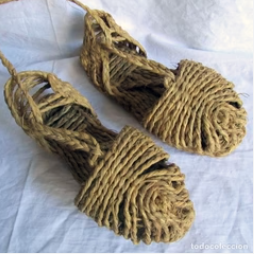
In the past these were the esparto grass shoes that were made to go to the fields.
-
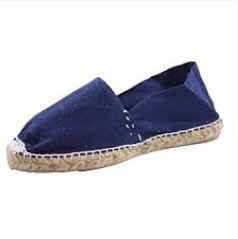
Today the esparto workers make the esparto soles and then join them to the different fabrics that make up the shoes.
-
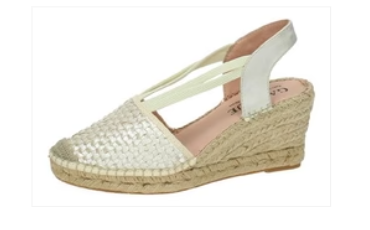
These are the usual espadrilles. They are made by esparteros. The ones that are fashionable today are of this style.

2) The basket maker
The basket makes baskets for shopping, transporting products for storage. They were made with wicker, which is a natural fiber.

Nowadays this has been lost because now all the baskets are made of plastic since they are cheaper. But there is nothing like natural fiber baskets.

These are the baskets of today. We should consider changing them for wicker ones, which are more sustainable as well as beautiful than plastic ones. They may cost more but they last forever. Aesthetically, when it comes to shopping they look infinitely better.
3) Profession of the Sillero
The chair man fixed chairs. Since they were all made of natural fibers, they could be fixed and lasted forever. Now we tend to buy a chair at IKEA and when it breaks we throw it away. In the past there were professions to repair. As disposable consumerism grew, these professions were lost. But there are people who have inherited family furniture and are looking for someone who can repair an old chair... and the truth is that there are very few people and it is difficult to find who can repair a chair.
-
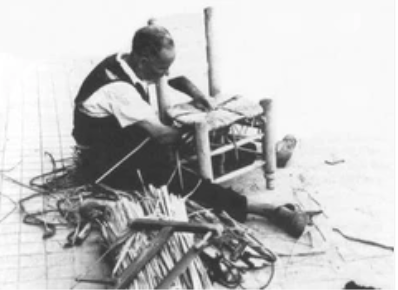
Chair
-

Antique mesh chair
-
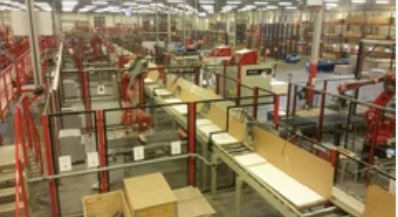
Place where chairs are now made
-
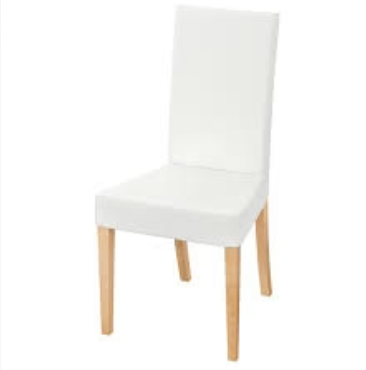
Chairs of now

4) The Umbrella Stand
Formerly there was the profession of the Umbrella Stand. A man who, when your umbrella broke, would take it so he could fix it.
Nowadays that profession has disappeared because if an umbrella breaks, what do we do? We threw it away and bought another one.

5) Alarm clock
Before, people didn't have alarm clocks or cell phones. There was a man who walked down the street with a cane knocking on the windows of whoever asked for it. He knocked on the window with a cane to wake up. When he saw that this person made a gesture that he had gotten up, he would continue to the next house.

6) The lamplighter
The lamplighter was dedicated to lighting the streetlights in ancient times. These were powered by gas and he had to light them every night.

7. Pasta Dryers
The pasta used to dry like this. It was hung with two rods. Here they are transporting the freshly made pasta to the drying place.

8. The apprentice
In the past there was a figure called La aprendiza or the apprentice. They were young people who began to work in a certain place and learned. Many times they had to pay the establishment to teach them. Today I would be the intern and the intern gets paid. Before it was the other way around, the apprentice paid to receive information on how to perform that job.

9. The Stocking Darner
In the old days there was a lady who darned stockings. When they broke they were taken to this lady to fix them. Nowadays when they break we throw them away. But before they fixed it.

10. The dressmaker, The seamstress, The tailor and the designer
In the past there were tailors who dedicated themselves to making clothing for men. Then there was the dressmaker. She designed, made patterns, created prototypes, chose fabrics, fitted and made the clothes. These clothes were passed to the Seamstress, who was in charge of sewing them.
Nowadays the designer learns to do everything. They may delegate work but they are taught that they can do everything.
11. Mannequin
In the past, women models were not called models, but rather mannequins.
A woman who was acting as a mannequin held it in front of a potential client so that he could see how the clothes would look on him if he bought them.
-
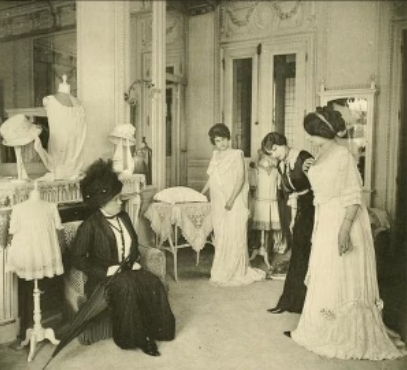
In the image we see the client sitting and the mannequin wearing the garment.
If the customer purchased the garment, the dressmaker or seamstress would be responsible for making the clothing fit the customer.
-
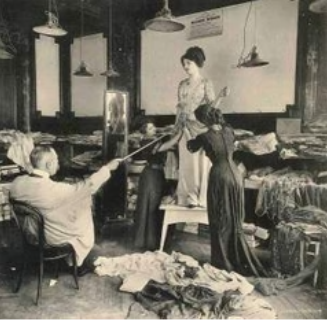
Nowadays the models wear the clothes but in most cases their bodies don't look much like ours. Now if we buy something and we don't like how it looks, we throw it away and buy another item of clothing. We don't go to the dressmaker like before to have something that doesn't fit us fixed. I'm talking about cheap clothing. If you buy something of quality if you go to the dressmaker.
-

Before, clothes were made so that they fit well on women. Now we make the woman so that her clothes fit well.
If we realize, all these professions are coming back little by little because they offered experiences. Many people return to these ancient professions because they are looking for something that will satisfy them intellectually and spiritually.
New jobs do not satisfy us because they are technological and have nothing to tell. Maybe in 50 years we will feel nostalgic for today's jobs. But the truth is that I highly doubt it. Maybe we will feel nostalgia for computer models because in the future they will be a sheet of how finite they will be. But we will not be able to feel nostalgic about the fact of sitting in a chair in front of a computer all day.
It is curious that when we travel and buy a souvenir for our relatives we usually buy a handmade piece. We don't bring you anything from the H and M from wherever we've been. That means that deep down we all know that craftsmanship counts for much more than any other mass-produced piece. Handmade items will be more expensive. Yeah. But for everything that happens behind that piece. The machine will always be cheaper than hands because it has been automated to do that.
But there are only a few hands, they are unrepeatable.
We feel nostalgia for what used to be because objects, experiences, places have a background and most importantly something to tell, we can investigate it.
Other products that may interest you
-
Natural straw hoop scrunchie
Regular price €60,50Regular priceUnit price / per -
Natural straw circle earrings
Regular price €49,50Regular priceUnit price / per -
High braided straw headband
Regular price €125,00Regular priceUnit price / per -
Holly headband
Regular price €53,90Regular priceUnit price / per















